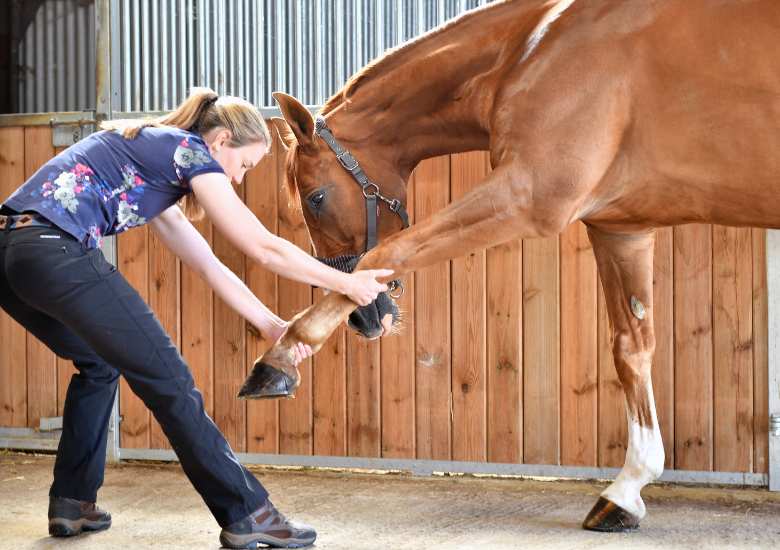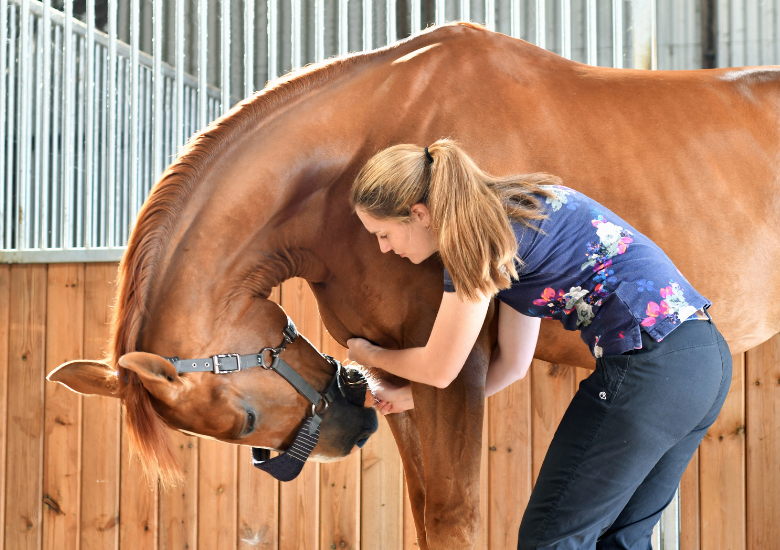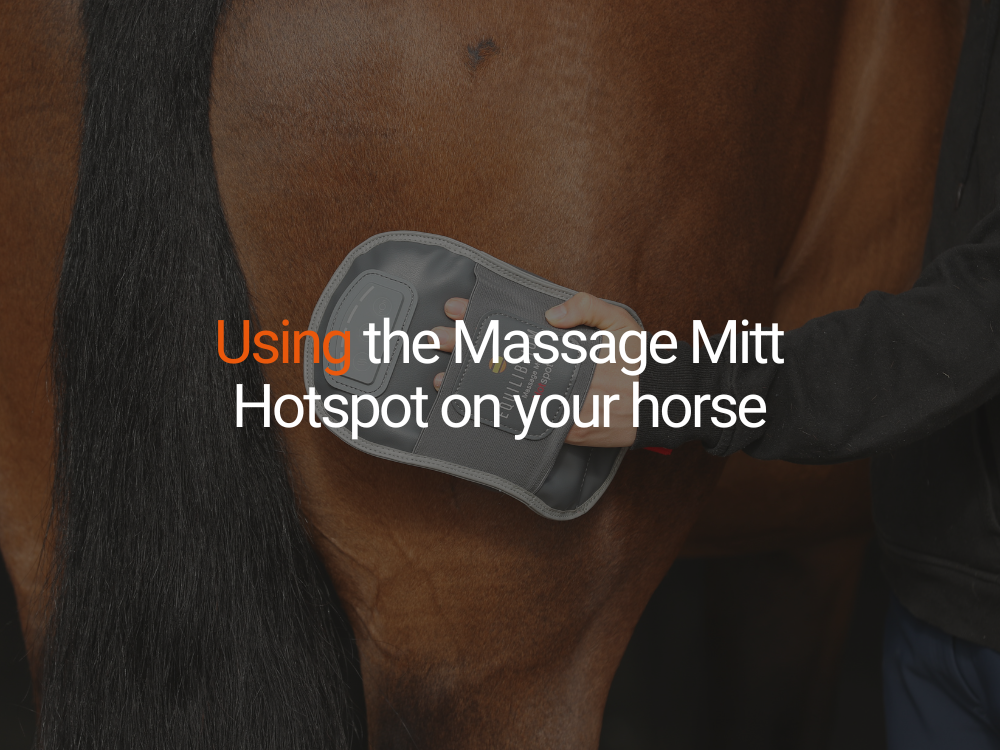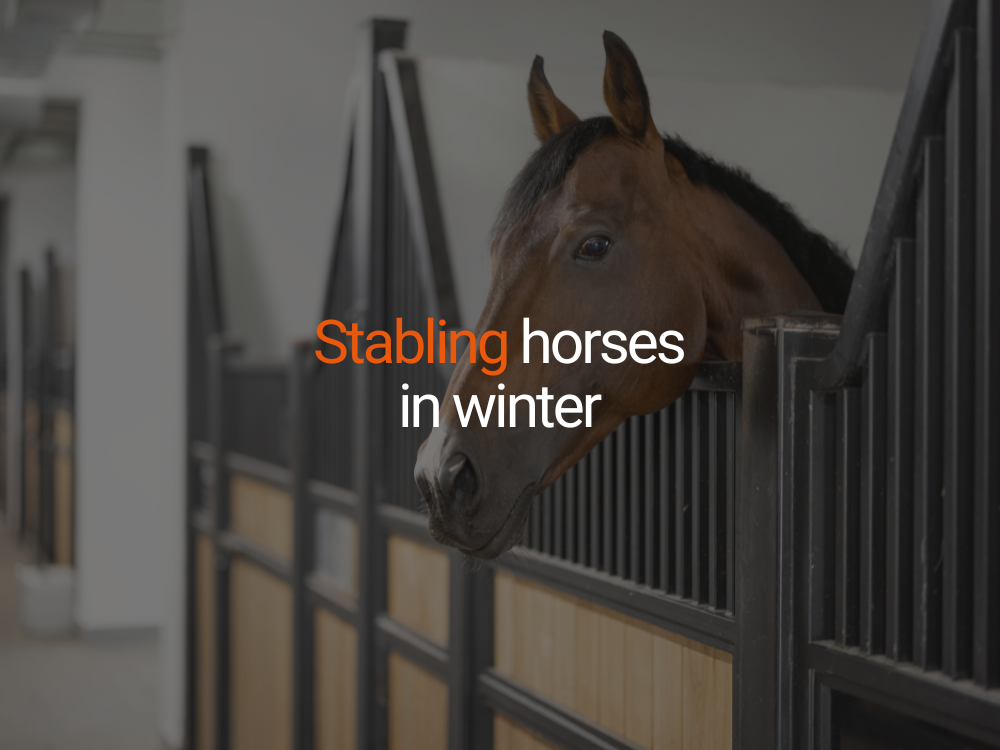
Passive Stretches

Baited Stretches of the Head and Neck

LIVRAISON GRATUITE POUR LES COMMANDES DE PLUS DE 50 £
5* AVERAGE SERVICE RATING
Instructions spéciales concernant la commande
Vêtements pour chevaux
Vêtements pour chevaux
Thérapie
Bottes pour chevaux
Soleil et vol
Licols et longes
Tapis
Accessoires d'équitation
Nutrition
Nutrition
Blocs d'alimentation et de foin
Friandises
Haynets
Bucket Covers
Shop by Pet
Gamme
Additional B2B Information
Additional B2B Information
Shop by Discipline
Shop by Discipline
Zone d'éducation
Les étirements ne doivent être effectués qu'une fois les muscles échauffés. Le meilleur moment pour étirer votre cheval est après l'exercice, en utilisant alternativement leCoussin de massage Equilibriumet leGant de massageLes étirements sur les zones clés, comme le cou, les épaules et les hanches, peuvent aider à réchauffer les muscles. L'étirement d'un muscle froid augmente le risque de lésion des fibres musculaires, car elles sont moins élastiques et peuvent se déchirer plus facilement.
S'étirer régulièrement présente de nombreux avantages, notamment :
Vous trouverez ci-dessous 10 étirements simples que vous pouvez faire régulièrement avec votre cheval pour l'aider à rester souple sur sa ligne supérieure, encourager une bonne longueur de foulée et améliorer la flexion du cou.

Fore limb Protraction
Pick up the horses’ foot as normal and then gradually draw the limb forward supporting the fetlock joint and flexor tendons. Hold for 30 seconds and repeat 3 times on each leg. If your horse is snatching the leg back, reduce the amount of stretch and build up gradually each day. This will stretch the triceps, lattisimus dorsi and other muscles involved with forelimb movement.
Hind limb Protraction
Draw the horses’ hind limb forwards toward the forelimb fetlock; make sure you keep the leg in a straight line rather than pulling the limb away from the body. Again, hold for 30 seconds and repeat 3 times on each leg. This will stretch the hamstring muscle group.
Lateral Extension of Spine
Place one hand on the wither and the palm of your other hand on the point of hip. GENTLY place pressure on the point of hip in a straight line towards the back of the horse. Hold for 30 seconds and repeat 3 times on each side. Some horses may find this one more difficult than others, take your time and increase the stretch slowly. If your horse tries to move away, ask for less stretch. If the muscles of the back are twitching hold the stretch and don’t ask for any more until this has stopped. Severe twitching may suggest your horse is in a bit more discomfort and would benefit from a once over by your vet.
Back lift
Run your finger tips down the crease in the muscles on your horses’ hind quarters, to encourage you horse to tilt their pelvis and lift through the lumbosacral region. ‘Tickle’ the area to try and maintain the lift for 15 seconds, repeat 3 times. Don’t try this one if you know your horse can be a bit handy with their back legs!

These baited stretches are really easy to achieve using the high value, low sugar treats, Crunchits. This way you don’t need to worry about how many treats your horse is having. With each of these stretches try to maintain the position for 10-15 seconds before giving the treat and repeat this 3 times on each side. Maintain smooth movements without any snatching or grabbing; if your horse is having to try and grab it may mean you’re asking too much too soon, reduce the stretch and build up gradually. Try to ensure your horse is stood as square as possible for all these stretches

1. Take the crunchit between the front legs close to the ground. This will stretch the muscles of the neck and back that make up the top line.
2. Take the crunchit between the horses’ front legs, ensuring he doesn’t start to twist at the poll. This will encourage greater flexion of the neck muscles, the poll, and cervical vertebrae.
3. Bring the crunchit around to the side to encourage lateral flexion. Aim for the horses’ shoulder.
4. From lateral flexion bring the crunchit down to ground level to stretch the muscles closer to the wither – these muscles are particularly important for self carriage.
5. Take the crunchit round to the flank to get an even greater lateral stretch.
6. Finally bring the crunchit forwards, trying to keep the neck horizontal and in line with the back to get full neck extension. Place your other hand on his shoulder to stop him from taking a step forwards and cheating!

Dans quelle mesure le licol de votre cheval est-il sécuritaire ?
Les licols sont l'un des équipements les plus utilisés par les chevaux. En fait, 88 % des propriétaires utilisent un licol pour cheval tous les jours*. En tant que cavaliers, nous disposons d'équipements de sécurité pour nous protéger, tels que des bottes, des chapeaux et des protections corporelles. Il s'agit évidemment d'éviter les blessures ou la gravité des blessures en cas d'accident. Mais est-il nécessaire que nos licols pour chevaux soient également sûrs ? Nous avons conçu notre licol Stellar après avoir fait des recherches sur les accidents impliquant des licols. Lisez la suite pour découvrir ce que nous avons découvert.

Utiliser le gant de massage Hotspot sur votre cheval
Il existe de nombreuses façons d'utiliser cet appareil portatif « pratique » qui offre à la fois massage et chaleur aux chevaux et à leurs propriétaires/cavaliers. Chargez la batterie pour que le voyant du chargeur passe au vert et c'est parti !

Écuries des chevaux en hiver
Prendre soin de ses chevaux en hiver peut s'avérer difficile, que vous les mettiez à l'écurie, que vous les sortiez dehors ou que vous souhaitiez simplement les monter ! Nous avons rassemblé quelques conseils sur la façon de prendre soin de votre cheval en écurie en hiver, ce qui pose quelques problèmes.
Inscrivez-vous à notre liste de diffusion pour recevoir des mises à jour sur nos produits, nos ventes et nos récompenses exclusives
Connecte-toi avec nous
© 2026,
Equilibrium.Copyright © 2024 Equilibrium Products Limited. Enregistrée en Angleterre et au Pays de Galles sous le numéro 03762996.
Nous utilisons des cookies et des technologies similaires pour offrir la meilleure expérience sur notre site Web.
